
AVR is a family of microcontrollers developed since 1996 by Atmel, acquired by Microchip Technology in 2016. These are modified Harvard architecture 8-bit RISC single-chip microcontrollers. AVR was one of the first microcontroller families to use on-chip flash memory for program storage, as opposed to one-time programmable ROM, EPROM, or EEPROM used by other microcontrollers at the time.

BIG TRAK / bigtrak is a programmable toy electric vehicle created by Milton Bradley in 1979, resembling a futuristic Sci-Fi tank / utility vehicle. The original Big Trak was a six-wheeled tank with a front-mounted blue "photon beam" headlamp, and a keypad on top. The toy could remember up to 16 commands, which it then executed in sequence. There also was an optional cargo trailer accessory, with the UK version being white to match its colour scheme; once hooked to the Bigtrak, this trailer could be programmed to dump its payload.

Arduino is an Italian open-source hardware and software company, project, and user community that designs and manufactures single-board microcontrollers and microcontroller kits for building digital devices. Its hardware products are licensed under a CC BY-SA license, while the software is licensed under the GNU Lesser General Public License (LGPL) or the GNU General Public License (GPL), permitting the manufacture of Arduino boards and software distribution by anyone. Arduino boards are available commercially from the official website or through authorized distributors.

A robotics simulator is a simulator used to create an application for a physical robot without depending on the physical machine, thus saving cost and time. In some case, such applications can be transferred onto a physical robot without modification.

libusb is a library that provides applications with access for controlling data transfer to and from USB devices on Unix and non-Unix systems, without the need for kernel-mode drivers.

The BeagleBoard is a low-power open-source single-board computer produced by Texas Instruments in association with Digi-Key and Newark element14. The BeagleBoard was also designed with open source software development in mind, and as a way of demonstrating the Texas Instrument's OMAP3530 system-on-a-chip. The board was developed by a small team of engineers as an educational board that could be used in colleges around the world to teach open source hardware and software capabilities. It is also sold to the public under the Creative Commons share-alike license. The board was designed using Cadence OrCAD for schematics and Cadence Allegro for PCB manufacturing; no simulation software was used.

A single-board microcontroller is a microcontroller built onto a single printed circuit board. This board provides all of the circuitry necessary for a useful control task: a microprocessor, I/O circuits, a clock generator, RAM, stored program memory and any necessary support ICs. The intention is that the board is immediately useful to an application developer, without requiring them to spend time and effort to develop controller hardware.
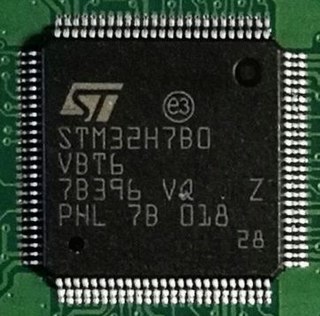
STM32 is a family of 32-bit microcontroller integrated circuits by STMicroelectronics. The STM32 chips are grouped into related series that are based around the same 32-bit ARM processor core: Cortex-M0, Cortex-M0+, Cortex-M3, Cortex-M4, Cortex-M7, Cortex-M33. Internally, each microcontroller consists of ARM processor core(s), flash memory, static RAM, debugging interface, and various peripherals.
OpenXC is a hardware and software API for automobiles developed by Ford Bug Labs and proposed as an open standard.
ISEE is a European multinational company that designs and manufactures small computer-on-modules (COMs), single-board computers, expansion boards, radars and other embedded systems. The abbreviation of ISEE refers to Integration, Software & Electronics Engineering. Their products are based on the IGEP Technology, the ISEE Generic Enhanced Platform using Texas Instruments OMAP processors.
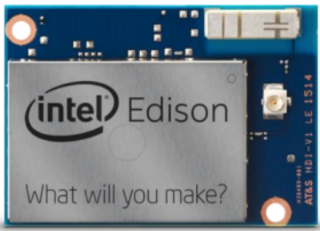
The Intel Edison is a computer-on-module that was offered by Intel as a development system for wearable devices and Internet of Things devices. The system was initially announced to be the same size and shape as an SD card and containing a dual-core Intel Quark x86 CPU at 400 MHz communicating via Bluetooth and Wi-Fi. A later announcement changed the CPU to a 500 MHz Silvermont dual-core Intel Atom CPU, and in September 2014 a second version of Edison was shown at IDF, which was bigger and thicker than a standard SD card.

Salvius is an open source humanoid robot built in the United States in 2008, the first of its kind. Its name is derived from the word 'salvaged', being constructed with an emphasis on using recycled components and materials to reduce the costs of designing and construction. The robot is designed to be able to perform a wide range of tasks due to its humanoid body structure planning. The primary goal for the Salvius project is to create a robot that can function dynamically in a domestic environment.

The Arduino Uno is an open-source microcontroller board based on the Microchip ATmega328P microcontroller (MCU) and developed by Arduino.cc and initially released in 2010. The microcontroller board is equipped with sets of digital and analog input/output (I/O) pins that may be interfaced to various expansion boards (shields) and other circuits. The board has 14 digital I/O pins, 6 analog I/O pins, and is programmable with the Arduino IDE, via a type B USB cable. It can be powered by a USB cable or a barrel connector that accepts voltages between 7 and 20 volts, such as a rectangular 9-volt battery. It has the same microcontroller as the Arduino Nano board, and the same headers as the Leonardo board. The hardware reference design is distributed under a Creative Commons Attribution Share-Alike 2.5 license and is available on the Arduino website. Layout and production files for some versions of the hardware are also available.

The Micro Bit is an open source hardware ARM-based embedded system designed by the BBC for use in computer education in the United Kingdom. It was first announced on the launch of BBC's Make It Digital campaign on 12 March 2015 with the intent of delivering 1 million devices to pupils in the UK. The final device design and features were unveiled on 6 July 2015 whereas actual delivery of devices, initially planned for September 2015 to schools and October 2015 to general public, began on 10 February 2016.
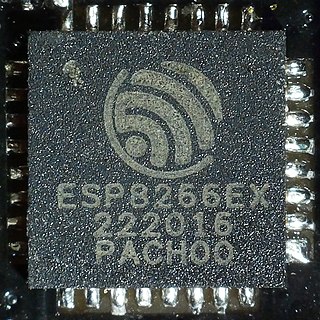
The ESP8266 is a low-cost Wi-Fi microcontroller, with built-in TCP/IP networking software, and microcontroller capability, produced by Espressif Systems in Shanghai, China.
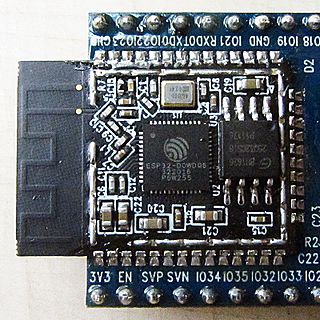
ESP32 is a series of low-cost, low-power system-on-chip microcontrollers with integrated Wi-Fi and dual-mode Bluetooth. The ESP32 series employs either a Tensilica Xtensa LX6 microprocessor in both dual-core and single-core variations, an Xtensa LX7 dual-core microprocessor, or a single-core RISC-V microprocessor and includes built-in antenna switches, RF balun, power amplifier, low-noise receive amplifier, filters, and power-management modules. Commonly found either on device specific PCBs or on a range of development boards with GPIO pins and various connectors depending on the model and manufacturer of the board.
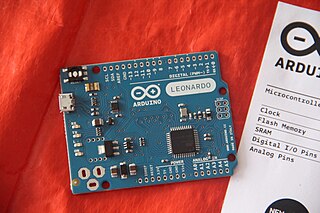
Comparison of Single-board microcontrollers excluding Single-board computers
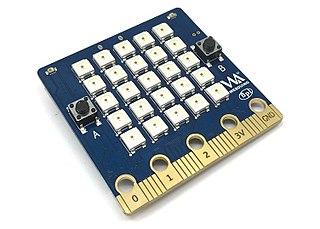
The BPI Bit is an ESP32 with Xtensa 32bit LX6 single/dual-core processor based embedded system

RP2040 is a 32-bit dual ARM Cortex-M0+ microcontroller integrated circuit by Raspberry Pi Ltd. In January 2021, it was released as part of the Raspberry Pi Pico board. Its successor is the RP2350 series.



















